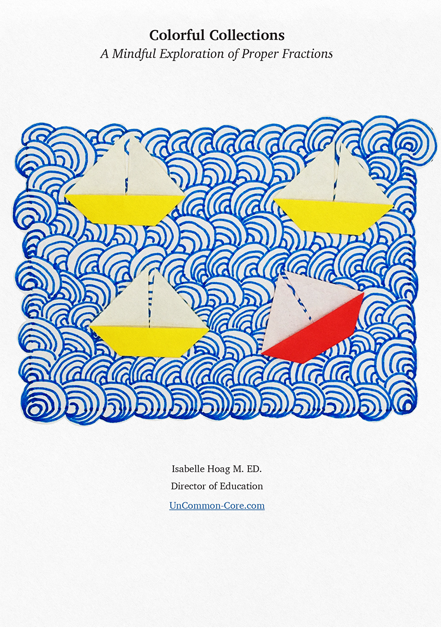Printables
Invite your students to see familiar information in a brand new format. Everyone will want to highlight multiples of various numbers, square numbers, or some other category of numbers. They will compare the spiral design with the typical presentation of a square 100 chart, and be able to see numerical patterns within the first hundred numbers that aren't that obvious when viewed on a linear number line or a square 100 chart. Grab this free-for-now Spiral 100 Chart and let your students play math!
You and your students can find many patterns when looking at the squares and their roots, some of which may never have been identified before. Students will have opportunities to: use academic language in conversation and writing, make sense of information presented in graphic form, practice sharing mathematical ideas in writing, organize and present data, ask questions, find ways to answer questions they have asked, and dive into an interesting project.
Folded in thirds, these activity pages give students an interesting and unique experience with measuring area and perimeter. The six pages have 20 shapes ranging from rectangles to complex composite shapes.
Ahoy Teachers! Give your students plenty of practice thinking of multiplication as repeated addition with this set of pirate themed task cards. Then let your students learn how to write multiplication number sentences with parentheses using this same set of tasks. Pirates' Gold: Multiplication Task Cards Includes: 48 task cards A choice of two different answer sheets Answer Keys for both types of answer sheets Fun pirate theme Tips for preparation and printing
How can origami help your students measure angles? Children naturally enjoy creative activities such as folding paper models from squares. These activities show you how to make use of origami crease patterns (the designs that appear when you unfold a model) to give your students practice measuring and adding angles. Crease patterns include some intriguing mathematical properties that your students will want to investigate. For example, when folds intersect creating a group of angles around an interior vertex, the sum of these angles is always 360 degrees. Or is it? Hmm, your students will have to measure and total loads of angles to find out. Additionally, if you number the angles surrounding an interior vertex sequentially, the even numbered angles will have a sum total of 180 degrees. These are some of the fascinating characteristics of origami crease patterns which will have your students folding models full of angles, unfolding those same models, measuring the angles, recording the measurements and finding the sums of the angles measured.
Never folded origami models? Give it a try with these instructions and links to some fun animals. Enjoy!!! Download for free.
Grab this sample of an exciting new way to get students thinking about: Geometric patterns Multiplication Math and Art Coordinate systems Grids How to display data
Sample mathematical activities that use Mobius Strips. In this showcase of ideas there is a page for : Vocabulary Addition Subtraction Multiplication Division Rational Numbers Your students create endless loops of equivalencies ~ looking at equations and expressions from a unique point of view.
Instructions for Making Paper Stars Grab some paper squares, start folding, and one cut later - you'll have a galaxy of stars. This free PDF includes step by step instructions on how to make a paper star or pentagon. Also there is a single page of instructions for both stars and pentagons. Students practice: Following directions Making sense of 2D images Monitoring their understanding Hand eye coordination Geometric reasoning Step by step instructions have clear illustrations and detailed descriptions. Free PDF includes instructions for star or pentagon. There is also a single page reference to use once students understand each step.
Grab the 58 page 2024 Calendar Project from TPT for $3 But ~ while you're here ~ download this free preview of the project to see what is included!
You might think this is a trick ~ It isn't! Teach students to sift numbers in search of GCFs or LCMs. Start with the most likely candidates. Ask questions to test each factor or multiple. Find GCFs and LCMs faster than ever. Students gain confidence and understanding. This sieve helps students make sense of GCFs and LCMs.
This Halloween teach your students some especially terrifying geometry. The twisted loops used in these activities are Mobius Strips. Mobius Strips have one side. They have one edge that encircles the entire loop. Crazy things happen when students draw on, fold, or cut into these tangled loops!
Download Colorful Collections:
A Mindful Exploration of Proper Fractions
Help your students make sense of fractions.
I started teaching in 1987, which means I’ve collected many tips and tricks along the way. In this ebook, I share concepts, strategies, and classroom materials to help you make math sticky.
Along with this useful ebook, you will receive weekly emails from StickyMath@UnCommon-Core.com. I send information like: teacher tips, educational ideas, book reviews, curated lists, reviews of educational sites, and free first drafts of products that I’m creating for my TPT store. That way, you get helpful ideas and free stuff, while I get some feedback before I finalize products and put them up for sale.
I value your privacy. I will never sell your information. You may unsubscribe at any time.
All the best!
Isabelle
Isabelle Hoag M. Ed.

